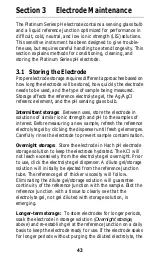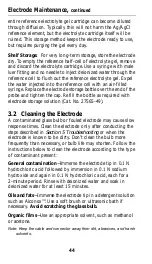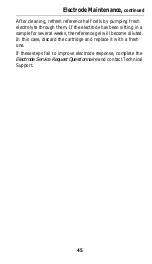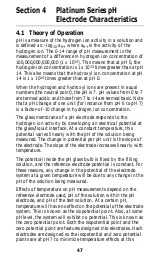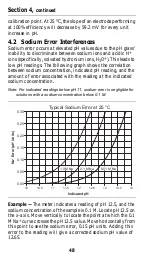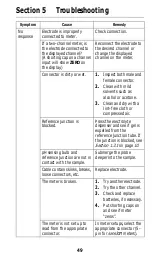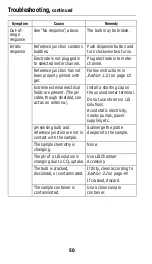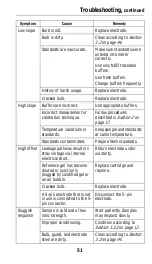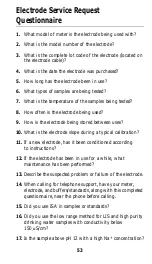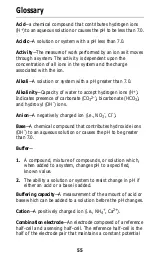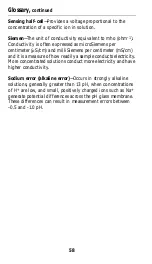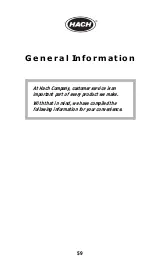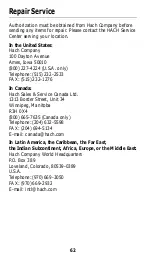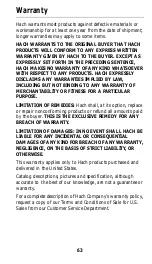
57
Glossary,
continued
Ion—An atom, group of atoms or molecule that is electrically
charged as the result of gaining or losing electrons. An ion
resulting from the gain of electrons becomes negative (anion),
while an ion resulting from the loss of electrons becomes
positive (cation).
Ionic strength—A measure of the concentration of any ion in
solution, usually expressed in moles per liter.
Occasional use—Infrequent use where the probe is subjected to
test conditions just long enough to obtain a proper reading.
pH—A relative numerical measurement of the acidic, neutral, or
alkali nature of a solution or system. Mathematically defined as
the negative log of the hydrogen ion concentration.
Potential—The capacity of a system to perform work. When two
ions of opposite charge are separated by a distance, there is a
potential developed from the tendency of the ions to come back
together. Each ion exerts work to come back together.
The amount of work needed by each ion to come back together
is the potential.
Reference element—A silver wire coated with silver chloride,
this element develops a constant potential when immersed in
an electrolyte such as potassium chloride.
Reference half-cell—Provides a constant voltage against which
the pH dependent voltage from the sensing half-cell is
compared.
Reference junction—The point on the electrode where reference
gel is dispensed.
Routine use—Typical use following regular, frequent routines,
but not continuous as with an in-line monitoring process.
Salt—An ionic compound.
Содержание PLATINUM Series
Страница 2: ...2...
Страница 4: ...4...
Страница 6: ...6...
Страница 8: ...8...
Страница 16: ...16...
Страница 17: ...17 Section 2 Applications...
Страница 18: ...18...
Страница 26: ...26...
Страница 42: ...42...
Страница 46: ...46...
Страница 52: ...52...
Страница 54: ...54...
Страница 60: ...60...
Страница 64: ......

